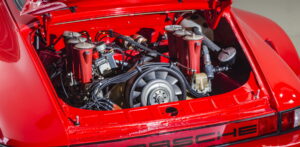Porsche 911 Turbo depreciation: A smart financial choice
1. Understanding depreciation trends in 911 turbo models: A financially savvy choice
2. Current depreciation rates: New to old
3. The star performer: 996 Turbo
5. Comparative analysis with the market
6. Conclusion
Understanding depreciation trends in 911 turbo models: A financially savvy choice
In recent years, the depreciation rates of various generations of the Porsche 911 Turbo have made these cars financially savvy purchases compared to their competitors. This hasn’t always been the case, as the market has undergone significant changes. Let’s delve into the current depreciation rates, moving from the newest to the oldest models, to understand this trend better.
Current depreciation rates: New to old
992 Generation
Starting with the 992, split by the base and the S model, we observed a rapid decrease in values during the second half of 2022. This was in line with the broader market trend, which saw above-average depreciation rates during this period. However, in 2023, the 992s stabilized, and the depreciation rates decreased. The base models saw a decline of 3.4%, while the S models depreciated by 4.9%, translating to losses of $7.6k and $12.4k, respectively. It’s important to note that these figures represent averages across all model years, with brand new ones experiencing slightly higher depreciation. The larger supply of S models means these numbers are more reliable. Despite the overall market downturn, the depreciation rates for the 992s have remained relatively low.
991.2 Generation
The 991.2 generation followed a similar price pattern, with a sharp drop in prices during the second half of 2022 and stabilization in 2023. Compared to the previous year, base models are now 5.2% cheaper, and S models are down by 3.9%, equivalent to losses of around $8k and $7.1k, respectively. As with the 992s, the larger supply in the S market provides more reliable price estimates.
991.1 Generation
Moving to the 991.1 generation, the trend remains consistent. Prices surged during the pandemic, peaked in early 2022, and then saw an above-average decline in the second half of 2022, followed by a flatter trend in 2023. Base models are now 5.9% cheaper than a year ago, while S models are down by 2.4%, translating to losses of $7.8k and $3.4k, respectively. Again, the larger S market provides the most reliable estimates.
997 and 996 Generations
The 997 generation is on the cusp of becoming a collectible, while the 996 Turbo is already considered one. The 997.2 Turbo S market saw only a small correction from the pandemic price peak, with current prices just a few thousand dollars below the top. Last year, S models even increased by 1%, although this change is not statistically significant. The base model was excluded from this analysis due to its volatile price trend driven by low supply.
For the 997.1, the manual models saw a significant price premium during the pandemic, which has remained elevated. Manuals now command about $30k more than automatics, with the manual market being smaller and more volatile. Prices for manuals dropped marginally from their 2022 peak, a trend only seen in a few models like the Ferrari 360. Over the past year, manuals lost 3.5%, and automatics 3.9%, equating to losses of $4k and $3.4k, respectively, though the automatic change is not statistically confirmed.
The star performer: 996 Turbo
The 996 Turbo stands out as a particularly financially savvy purchase. Advocating for the 996 for a long time, its prices remained stable after mid-2022. Regular Turbos saw a price increase of 3.1%, while those with the X50 package were up by 1.8%, translating to increases of $2.1k and $1.6k, respectively. These changes, however, are not statistically significant due to the small market size. The 996 Turbo’s resilience makes it an excellent option for buyers seeking low depreciation rates.
Putting it all together
When comparing these models, we see that Turbo models lost an average of 2.5%, with some variations across generations. The 997.1, 991, and 992 models all lost about 4%, while the 997.2 and 996 did not see significant price decreases. These low depreciation rates are impressive, especially for newer models like the 991 and 992, which typically depreciate more.
Comparative analysis with the market
Comparing these rates to the broader market, we see that the median decrease in car prices was 7.4% last year, with most cars losing between 3.0% and 13.0%. Turbo models outperformed the market average, particularly newer models like the 991.2 and 992, which had lower depreciation rates than the average. The 997.2 and 996 models even fell in the top 24% of cars with the least depreciation.
In comparison to front-engine GT cars, Turbo models performed significantly better. Older Vantages lost 6.8% and 7.1%, while newer models like the AMG GT and V8 F-Type saw losses of 11.2% and 14.9%, respectively. Modern Ferraris and other mid-engine cars also saw higher depreciation rates than the Turbo models.










